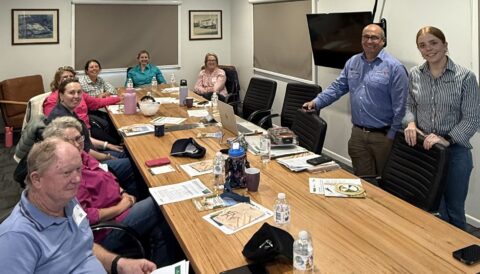Wild dog program delivers – but future funding remains uncertain
As existing support arrangements wind down, the National Wild Dog Action Plan program continues to deliver value on the ground—supporting producers with practical tools and coordinated control.
This month, the Centre’s Greg Mifsud, National Wild Dog Management Coordinator, travelled to Biloela in Central Queensland as a guest speaker at an event sponsored by Meat & Livestock Australia and supported by the Fitzroy Basin Association.
Greg joined Dr John Langbridge of meat processor Teys Australia and Melinee Leather, a local landholder leading the Barfield Road Producer Group, to share insights from a 12-month trial of best practice wild dog control.
Commenting on these efforts, Melinee Leather said, “With wild dogs a vector for hydatid disease, the efforts are securing increased weights and higher quality beef production based on carcass data analysis helping regional land managers make more informed on-farm management decisions.
“The use of tools such as FeralScan are assisting producers to work in a coordinated manner to monitor wild dog movements and record control across a regional area. Neighbouring properties have been able to develop integrated pest management plans leading to more efficient and effective control efforts.”

Greg, standing left, is pictured with Grace Wickson of the Fitzroy Basin Association together with landholders and cattle producers from the Barfield Road Producer Group at the workshop.
While delivery continues, readers may not be aware that current generous funding from the Department of Agriculture Forestry & Fisheries that supports the program’s communications and administrative functions is due to conclude on 31 October 2025. The funding for the continuation of this vital project is not certain. A recent meeting explored future funding options and sustainability options and the Centre is working through these to ensure that funding for the project is secured.




